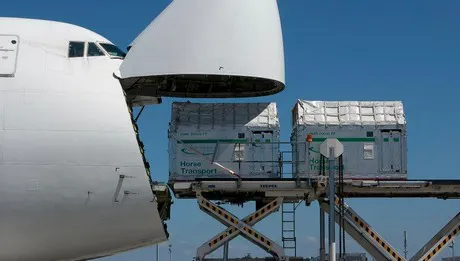After the slow start in January, flower and plant exports from the Netherlands increased by almost 6% in February. The cumulative value narrowly exceeded € 1 billion, according to statistics from Floridata. Exports to Eastern Europe, a good Valentine's Day and the retail segment were responsible for lifting the markets in February. Worries remain about the two largest export markets, with German exports weakening and the Brexit-induced political uncertainty continuing without end in sight. Nevertheless, the VGB believes that the worldwide prognosis for growth remains favorable.

The 6% increase should be viewed in the context of the unusually cold spring last year which caused a 2% decrease then. In February this year the plant value increased by 13% and the flower value by 3%, compared to last year. For the third consecutive year, Dutch flower and plant exports passed the € 1 billion mark after two months already. Up to and including February, the lead compared to 2018 on plant turnover is 7% (€ 359 million) and on flower turnover 2.5% (€ 725 million).
Rising retail segment
In addition to northwestern Europe, which accounts for 80% of the export turnover of the top 10 countries, the official holidays are an important income source. This year holidays have a more optimal distribution for the sector with a later Easter than last year, which benefits sales numbers.
Valentine's Day did not set any records this year, but the continued high demand after February 14 was positive. The retail sector did very well on Valentine's Day, generally better than in previous years. According to Floridata, retail sales in the pot and garden plant segment increased more than in cut flowers.
Eastern Europe
With Russia (+18% to € 74 million) and Poland (+10% to € 49 million) performing strongly, two of the top 5 export countries were Eastern European through February. This happened for the first time last year and is indicative of the growing importance of Eastern Europe for Dutch flower and plant exports. "Due to the expected growth in other countries and slowdown later in the year in Russia, this is probably temporary, but significant nevertheless," said Wesley van den Berg from Floridata.
He further notes that the most significant growth, in relative terms, is actually taking place in countries outside of the top 10. "This is a positive development because the exporting wholesaler benefits from diversification, also from risks. We also see an increase in requests for debtor information, which indicates that the market is growing.”
Concern about the top export countries
Despite the 3% increase in export value in Germany in February, the largest market for the Netherlands still remains 2% behind on last year. It's therefore the only red-colored country in the top 10, while in January there were still five. "The market generally recovered quickly after the poor start," says Matthijs Mesken, VGB director. "Concerns about slumping sales in Germany remain and that's also true for second place United Kingdom," referring to Brexit.
Director Michiel van Veen of Royal Lemkes, one of the largest Dutch floriculture exporters on the British market, explains the impact the British indecisiveness is having on international business: “Getting no clarity time and time again is frustrating - for our customers, for us and for our suppliers. It is bizarre how much leeway politics is given. This all comes at the expense of the business community, and is ultimately paid for by the consumer."
Source: Floridata & VGB
